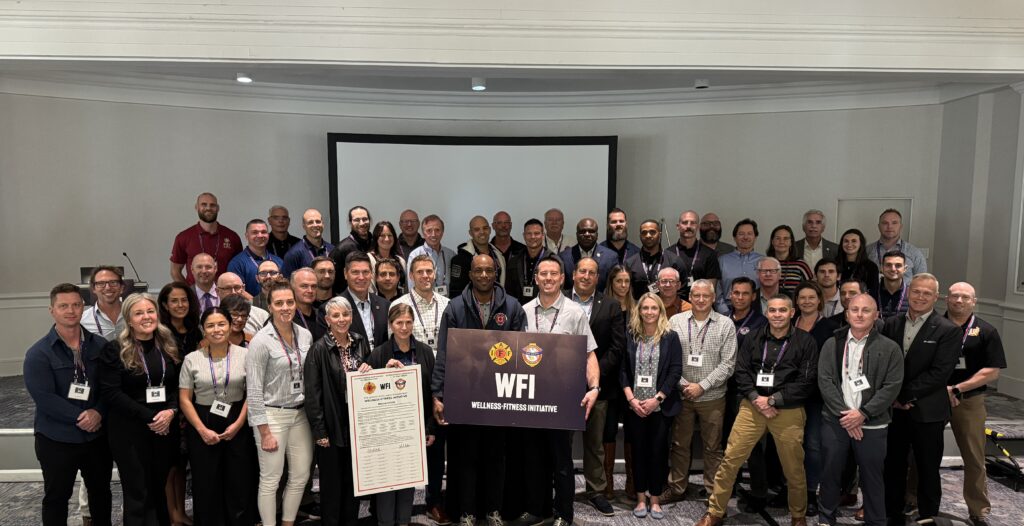
The International Association of Fire Fighters and the International Association of Fire Chiefs are continuing their 28-year collaboration to keep fire fighters healthier and safer by updating the Wellness-Fitness Initiative.
The 58 WFI Task Force members met at the Mayflower Hotel in Washington, D.C. last month, with some members joining remotely. The group agreed the program would benefit by placing a larger focus on best practice guidelines, program implementation, and behavioral change, while working to clarify what the WFI aims to be and accomplish.
Dr. David Frost, who has served as the WFI’s technical advisor for more than a decade, faclitated the meeting. Frost said the program needs to be more inclusive and effective.
“We had a very productive two-day discussion on how to improve the WFI so that it becomes more accessible to fire fighters and focused on encouraging behavioral changes that result in healthy habits,” said Frost, who sits on the faculty at the University of Toronto, specializing in Kinesiology and Physical Education. “Talks also centered around how to make elements of the program accessible to everyone, not a one-size-fits-all document. It has to be a place that any department can find guidance on implementing health improvement goals.”
The WFI was designed in 1996 to support fire fighters health, fitness, and wellness by providing guidelines and resources for fire departments in the United States and Canada. It has been updated over the years to reflect the latest studies and best practices.
A big discussion point for task force members was making the WFI useful for all fire departments, regardless of size and resource availability. Many task force members said the initiative should be a repository of evidence, a collection of best practice guidelines, and an actionable implementation roadmap.
President of Puget Sound Fire Fighters Union (WA) Local 1747 Keven Rojecki said the bottom line “is that we want to use the guidelines and implementation protocols in the WFI, whether it is about nutrition or cancer prevention, to keep us healthy throughout our careers. And implementation should be doable whether you have a lot of resources, or just a few.”
“We became fire fighters because we wanted to help others. It is a struggle for a lot of us to remember that if we want to do that, we need to take care of ourselves first,” Rojecki added. “We have fire fighters who start their careers healthy but then get out of breath climbing the stairs 10 years into the job because they have not taken care of their nutrition and cardiovascular health. And that’s not good.”
WFI Task Force members also concluded that mandating compliance to follow the initiative’s recommendations is effective in some jurisdictions, but not in others. However, for long-term success, there needs to be an emphasis on encouraging behavioral changes that influence fire fighter health, safety, fitness and performance.
Cambridge, Ontario, Fire Chief Rob Martin, an active participant at the WFI Task Force meeting, agreed.
“Successfully implementing pieces of the WFI or the program in its entirety is about changing mindsets,” Martin said. “And while that does take longer than making compliance mandatory, it is more effective to start by educating fire fighters on why following protocols are beneficial to them.”
He said it is also good to lead by example. “For instance, if you are trying to encourage regular medical screenings, you might get low participation in the beginning. But if they hear these screenings are detecting medical concerns early, then they see the benefit and they will start doing it too.”
The task force hopes to have a finished draft of the new WFI sometime next year and be ready for distribution and use in early 2026.
